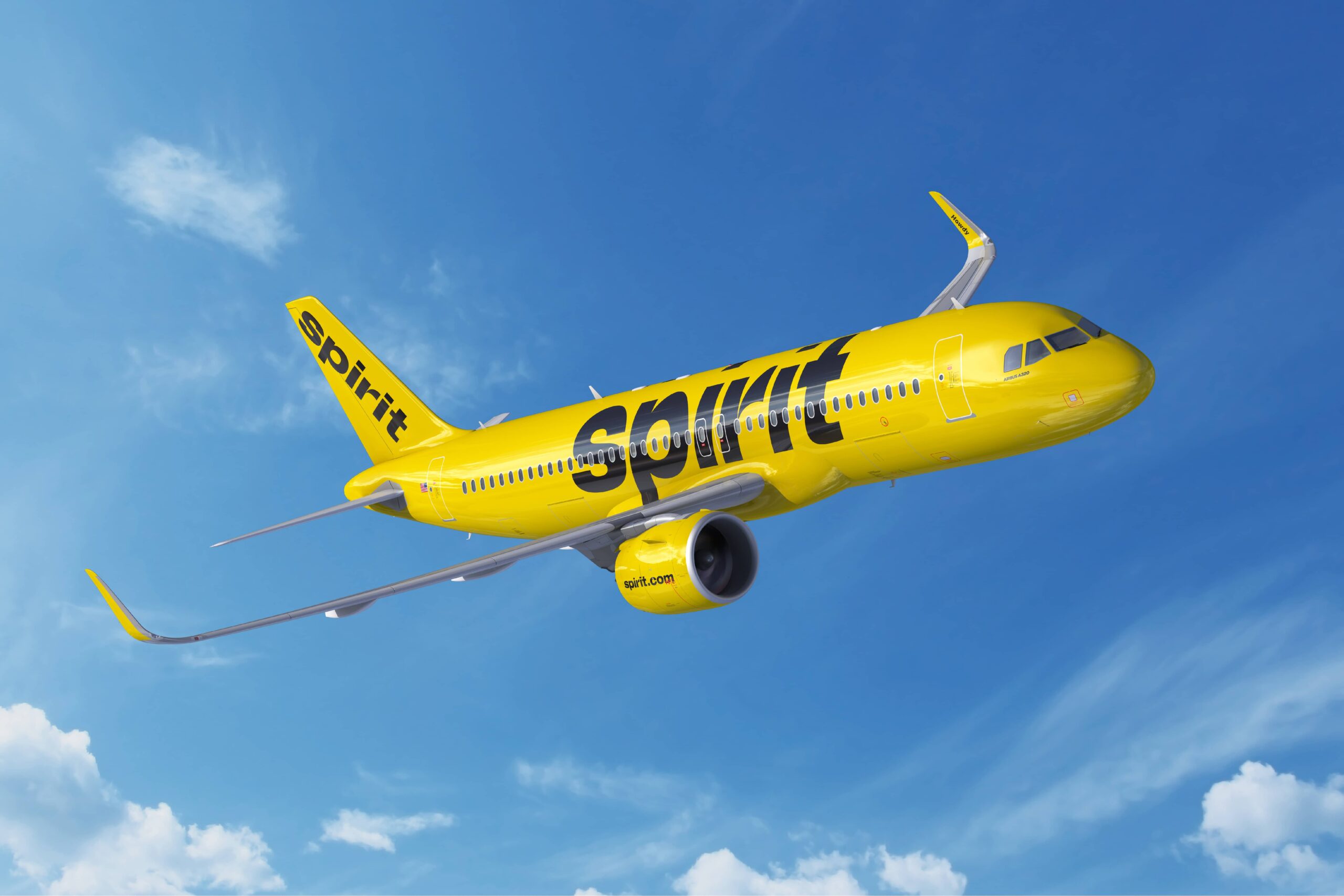Spirit Airlines has successfully reached critically important agreements with its pilots and flight attendants as the budget carrier takes another significant step forward in its ongoing Chapter 11 bankruptcy restructuring process, marking a pivotal moment for the financially troubled airline as it works to secure labor peace, reduce operational costs, and position itself for a projected return to profitability by 2027 after years of financial losses that pushed the ultra-low-cost carrier into bankruptcy protection.
On Friday, the budget airline’s parent company, Spirit Aviation Holdings, Inc., officially announced that it has reached an agreement in principle with the Air Line Pilots Association (ALPA) representing the airline’s pilot workforce and the Association of Flight Attendants-CWA (AFA) representing Spirit flight attendants. These parallel negotiations represent months of intensive discussions aimed at finding solutions that balance the needs of airline employees with the financial realities facing the struggling carrier.
Terms and Conditions of Labor Agreements
Both labor agreements are currently subject to definitive documentation, union ratification by the respective membership groups, and bankruptcy court approval, but they represent critically important steps for the beleaguered carrier attempting to emerge from Chapter 11 protection as a viable competitor in the intensely competitive U.S. airline industry.
According to Spirit Airlines, the airline’s senior leadership team has committed to taking a salary reduction at a percentage not less than the pilot group’s reduction when the pilots’ contract deal is officially ratified by union members. This executive pay cut demonstrates leadership’s willingness to share in the sacrifice being asked of frontline workers and addresses employee concerns about equity during the restructuring process.
The cost savings generated from these labor concessions are expected to help Spirit achieve the financial targets necessary for its next draw under its debtor-in-possession (DIP) financing facility, which provides operating capital to keep the airline flying during bankruptcy proceedings. This financing is crucial for maintaining operations while the restructuring plan is developed and implemented.
Leadership Statement on Labor Partnership
“These agreements reflect the shared commitment of our Team Members and principal labor unions in securing a successful future for Spirit, and we thank ALPA and AFA leadership for their partnership and collaboration,” said Dave Davis, President and Chief Executive Officer of Spirit Airlines, in an official statement released Friday.
“We’re grateful to our Pilots and Flight Attendants for their professionalism, resilience and unwavering commitment to safety and our Guests as we work to build a stronger airline that Americans can count on for many years to come,” Davis added, emphasizing the crucial role that airline workforce support plays in the carrier’s turnaround efforts.
This statement addresses concerns from employees and travelers asking “Will Spirit Airlines survive bankruptcy?” and “Is Spirit Airlines safe to fly?” by highlighting the collaborative approach to restructuring and the continued focus on operational safety and customer service.
Path to 2027 Profitability
The labor agreement news comes approximately one month after Spirit made the optimistic announcement that it expected to post its first full-year profit in eight years in 2027, assuming successful completion of its bankruptcy restructuring and implementation of new business strategies designed to improve revenue performance and cost management.
This 2027 profitability target represents a significant turnaround timeline for an airline that has struggled with mounting losses, intense low-cost carrier competition, failed merger attempts, and changing market dynamics in the post-pandemic travel environment. The projection answers investors and travelers asking “When will Spirit Airlines be profitable again?” and provides a concrete timeline for measuring the success of restructuring efforts.
Spirit’s Chapter 11 Bankruptcy Context
Spirit Airlines filed for Chapter 11 bankruptcy protection in late 2024 after years of financial struggles exacerbated by several factors including rising operational costs, intense competition from both legacy carriers and other budget airlines, a failed merger attempt with JetBlue Airways, elevated debt levels from aircraft purchases, and challenges adapting to changed consumer preferences in the post-COVID travel market.
The Chapter 11 filing allows Spirit to continue operating flights while restructuring its debts, renegotiating contracts, and developing a viable plan to emerge as a financially stable carrier. Unlike Chapter 7 liquidation, Chapter 11 provides an opportunity for companies to reorganize and continue operations, which is why passengers can still book and fly on Spirit Airlines despite the bankruptcy status.
For travelers asking “Can I still fly Spirit Airlines during bankruptcy?” and “Are Spirit Airlines tickets valid?”, the answer is yes—Chapter 11 allows the airline to maintain normal operations while restructuring.
What Labor Agreements Mean for Employees
The pilot and flight attendant agreements will likely include several components typical of airline bankruptcy restructuring including temporary pay reductions, modified work rules, changes to benefit structures, adjustments to scheduling provisions, and potential equity stakes in the restructured company.
While pay cuts are never welcome news for workers, the ALPA and AFA leadership clearly concluded that accepting concessions now provides the best path to long-term job security and eventual restoration of compensation levels once the airline returns to profitability. The alternative—liquidation of the carrier—would mean complete job loss for all Spirit employees.
The agreements likely also include provisions for snap-back clauses that restore some or all of the concessions once financial targets are met, as well as possible profit-sharing arrangements that allow workers to benefit when the airline succeeds.
Impact on Spirit’s Route Network and Fleet
The labor cost savings combined with other restructuring measures should allow Spirit to maintain a robust domestic route network and continue operations with its fleet of Airbus A320 family aircraft. The airline has indicated it plans to continue serving its existing markets while potentially adjusting capacity and frequency based on demand and profitability.
Spirit’s ultra-low-cost carrier (ULCC) business model relies heavily on controlling labor costs and operational efficiency, making these union agreements essential to maintaining competitive pricing while achieving financial stability. The carrier’s signature no-frills service, unbundled pricing model, and focus on price-conscious travelers will continue during and after restructuring.
What This Means for Spirit Passengers
For current and prospective passengers, the labor agreements represent positive news suggesting Spirit is making progress toward a successful emergence from bankruptcy. Several practical considerations for travelers include:
Flight operations continue normally: Despite bankruptcy status, Spirit maintains its regular schedule and service standards.
Ticket validity: Existing bookings remain valid and new tickets can be purchased with confidence.
Loyalty program: The Spirit Free Spirit program continues to operate, though terms could change post-restructuring.
Fare competitiveness: Spirit’s low fares remain a key differentiator even during bankruptcy.
Safety standards: FAA safety oversight continues unchanged regardless of financial status.
Travelers asking “Should I avoid booking Spirit Airlines?” or “Will Spirit Airlines cancel my flight?” can be reassured that bankruptcy restructuring, when successful, often results in stronger airlines—examples include American Airlines, Delta Air Lines, and United Airlines, all of which emerged from bankruptcy as financially healthy carriers.
Industry Context and Competition
The Spirit bankruptcy reflects broader challenges in the ultra-low-cost carrier segment, where razor-thin profit margins make airlines vulnerable to external shocks. Competitors like Frontier Airlines, Allegiant Air, and increasingly aggressive basic economy offerings from legacy carriers have intensified competition for budget-conscious travelers.
The successful restructuring of Spirit is important not just for the carrier’s employees and passengers, but for maintaining competitive pressure that keeps airfares affordable across the industry. The temporary reduction of Spirit capacity during restructuring has already contributed to higher average fares on routes the carrier serves.
Timeline for Restructuring Completion
While exact timelines remain uncertain, most airline bankruptcies conclude within 12-18 months of filing. Spirit will need to secure bankruptcy court approval for its reorganization plan, complete negotiations with creditors, and demonstrate viability before emerging from Chapter 11.
The labor agreements announced Friday represent one of several key milestones required before Spirit can emerge, along with debt restructuring, lease renegotiations with aircraft lessors, and development of a sustainable business plan that convinces stakeholders the airline can achieve its 2027 profitability goals.
For more breaking airline industry news, bankruptcy updates, labor relations coverage, aviation business analysis, and expert airline travel insights that keep you informed about developments affecting carriers and passengers, visit The Inspiring Insight. Stay current with our comprehensive coverage of airline restructuring, travel industry trends, aviation safety, passenger rights, and budget airline developments that impact your travel planning and flight booking decisions. Subscribe for the latest airline news, aviation updates, and travel industry analysis.




